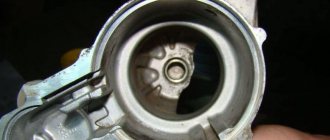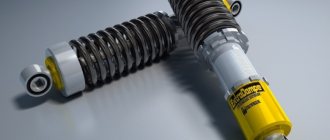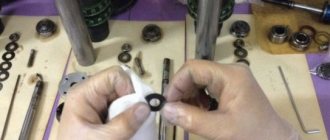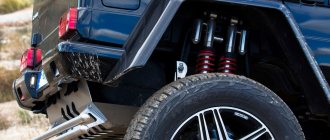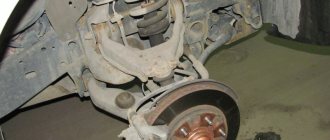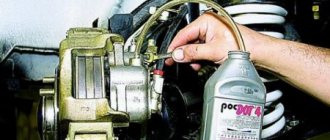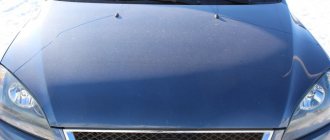Why is pumping needed?
First you need to figure out whether you need to pump it. We are talking about new shock absorbers that have not yet been put into operation.
Shock absorbers contain a stable environment of gas, oil, or a combination of both. New racks fresh out of print may have defects, minor defects, or undistributed filler.
It is to check the rack for serviceability that pumping is needed. In addition, without it, the shock absorber will not have simulated behavior due to the undistributed medium.
Rapid wear and tear can add to these problems. Technically, the medium can be distributed independently, even without pumping the shock absorber struts. However, in the car they will immediately be subject to stress and the filler will begin to diverge. But often the lubricant begins to leave the cylinder, since it was not distributed and concentrated near the rod. In this case, the resource is limited to 5-10 thousand kilometers.
So the answer to the question: “Do I need to bleed the struts before installation?” is yes. This is necessary for the safety of the driver and the vehicle.
By the way, car mechanics recommend replacing shock absorbers in pairs, rather than one at a time. Otherwise, there may be a noticeable imbalance and the machine will be slightly tilted.
Bleeding rear shock absorbers before installation
Bleeding is an easy procedure; new shock absorbers do not need to be sent to a service center. To properly pump the device, you need to follow this sequence of actions.
- Install the stand with the stem down. The base must be solid, ideally a concrete floor.
- Smoothly compress the product.
- We fix the position for two seconds.
- To get the rod back, you need to turn the shock absorber over and pull the tube out manually. Usually the rod rises without outside help.
- Leave the rod in the extended position.
- We repeat the procedure two or three more times.
After this, the rear struts can be installed on the lever or axle of the car.
What varieties can be upgraded?
So, which shock absorbers are bled before installation? The answer is everything. Gas, hydraulic and gas-oil ones must be pumped before installation on the car.
Just keep in mind that individual pumping of shock absorbers has been developed for each individual type. Below are detailed instructions.
How are gases pumped?
First, study this picture to understand the design of the gas strut. Afterwards you can pump up the racks:
- Turn the stand over with the stem facing down. Place it on a solid base. A concrete floor or brick is best.
- Now gently press down on the plunger. Act without jerking, smoothly and hold it there for a few seconds. At this time, the filler will be smoothly distributed throughout the cylinder.
- Then turn the stand over with the stem facing up and hold it there for 10 seconds.
- After the time has passed, carefully, without jerking, push the piston all the way.
- Now in this position repeat steps 2 and 3.
- We can say that the procedure is completed. All that remains is to make a sharp but short push of the piston inward. Please note that the movement should be soft, smooth, without squeaking.
Almost done, now do not turn the rack over until you install it, otherwise you will have to repeat it. The stem must point up!
It is advisable to wipe the cylinder with a rag to remove oil leaks so that the cylinder does not jump out of your hands during installation.
Hydraulic (oil)
How to properly bleed oil shock absorbers. In essence, the instructions differ little, but with some reservations. In hydraulic types there should be no gas (i.e. air) at all.
Here are instructions for pumping oil shock absorbers with your own hands:
- Lower the stand with the rod down and push it down. Perform the procedure without jerking, with extreme caution.
- Hold in this state for 3 seconds and then turn the piston up and hold for another 6 seconds. Please note that at this moment all the air should come out. This can be determined by the characteristic hissing.
- Now pull out the rod and turn it down and then up.
Unlike gas, oil is a more viscous medium and distributes more slowly. Therefore, it is necessary to repeat this procedure about 3 times. Then sharply push the piston in and make sure that it does not rub and fits easily into the groove.
If friction is noticed, you can repeat the procedure again. Has the result changed? This means you received a defective item that needs to be returned to the store.
Gas-oil
How to bleed shock absorbers before installation? In general, the instructions are almost the same, with the exception of repetition.
Repeat pumping 4 more times at 3 second intervals until the filler is completely distributed inside the cylinder. The gas-oil mixture is very capricious, so sometimes pumping needs to be repeated 5-6 times.
The pumping of gas-oil shock absorbers is now complete. Please note that during installation, extraneous sounds similar to slurping may be heard. This is absolutely normal for this type of rack.
How to bleed shock absorbers?
Before installing this device on the car, it must be bled. If you install it right away, the shock absorber piston system is 100% likely to break, which in turn will lead to failure of the new struts. Both front and rear shock absorbers need bleeding when installed on a car. Please read the instructions included with them before installing them.
If you decide to install a shock absorber without bleeding and it fails as a result, this is not considered a warranty case. This event will occur because air will somehow remain in the inner sleeve - which will interfere with the correct operation of the shock absorber and will not allow it to perform its original functions. It is quite simple to understand a broken shock absorber; you will hear a loud knock of the strut or extraneous noise will appear during its operation.
Let's consider this type of shock absorbers as twin-pipe. As was said earlier, before installing it, it should be pumped. While it is being stored or before being transported, the liquid component of this device may flow chaotically from one cylinder to another and vice versa. With this arrangement of affairs, gas is formed. If you do not pump the shock absorber and install it, then this gas will render the throttle valves of the device unusable and they, as a rule, are destroyed. Therefore, when installing, the shock absorber simply needs to be made operational or, as they say, “pumped.”
The instructions for pumping devices are literally as follows:
- Take the device in your hands so that the rod component of the shock absorber is in the lower plane, and gently squeeze it.
- Freeze in this manner for five or seven seconds.
- Without allowing the rod component to shift in this position, turn the device one hundred and eighty degrees and freeze for five or seven seconds.
- As soon as you complete step three of these instructions, remove the rod all the way.
- Holding the rod device in the upper plane, you need to squeeze it six times in a row. If at the same time the rod fails or it is difficult to “move”, then turn the device over one hundred and eighty degrees again and follow step one of these instructions.
- As soon as you complete points one to four of these instructions. Holding the device so that the rod component is at the top, you need to perform one control action. That is, you need to make sure that the piston extends the rod from one end to the other freely.
Properly pump the shock absorber - ensure that the piston component does not fail when moving from one position to the second and vice versa. After pumping the device, you need to take it so that the rod is at the top and keep it in the indicated position until it is completely installed on the vehicle.
How to bleed a shock absorber strut?
- The first thing you need to do is place the stand on a hard surface (for example, it could be a concrete floor), the rod should be strictly in the lower plane and begin to smoothly compress it.
- Squeeze and wait in this position for five or seven seconds.
- Having turned the device one hundred and eighty degrees, placing the rod in the upper plane, pull it back, provided that it has not returned to this state on its own.
- Then, leaving it in this position for five or seven seconds, repeat the operation, starting from the first point.
Something to remember! In any case, shock absorbers are pumped before installation on the car. Depending on the types of shock absorbers, the technology for pumping them remains almost unchanged.
Before pumping the oil shock absorber, let's look at its structure.
Twin-pipe hydraulic shock absorber. This shock absorber is, as a rule, the simplest in its design and the cheapest when considered relative to price. The main disadvantage of this type of shock absorbers is its instability in operation. It consists of the following components:
- A cylindrical surface in the form of a fuselage (or otherwise a tank).
- Cylinder for work (working cylinder).
- Valve for forward stroke or compression. It stands in the working cylindrical surface.
- Piston component (aka piston).
- The valve or bumper, in turn, into the piston component itself.
- Rod component.
- Shock absorber cover.
Let's look at how our shock absorber works:
The cylindrical surface located in the device cover (shock absorber) is also, among other things, a reservoir that is filled to the mark with oil. The piston component and rod are located in the working cylinder of the device. The device is based on this principle - upon compression, the piston component and the rod component move down and displace liquid (oil) from the cylindrical surface into the device body. The air component located at the top comes to compression. If the process happens the other way around, then the bumper plays the role of “passing” liquid from the device body into the cylinder. From this operating principle we can conclude that the design of the device is made in such a way that the shock absorber is built extremely simply. Everything would have been done to perfection if the hydraulic shortcomings of this device design had not interfered. As you know, when hydraulics operate, heating occurs and, based on physical laws, the compensation component of all springs flows into heat and the liquid heats up. Due to heating of the liquid (oil), a problem occurs. The two-pipe design itself will not interfere with heating the liquid, but what to do with its cooling? The problem of oil not being able to cool causes it to foam. It will not be possible to overcome this problem; car enthusiasts are making attempts to get rid of this problem by filling the shock absorber to capacity. This is the wrong approach, since a shock absorber filled to capacity with oil will deteriorate over time due to this. Aeration is a frequently occurring problem, and one has to put up with it, since there is no other way out of the situation.
Gas devices, like their liquid designs, are pumped according to the same principle and in the same order. Here, gas is used instead of liquid (oil). When using a gas device, it is assumed that the gas itself passes through a small hole that exists between several chambers; in this case, it is quite difficult for the gas to move between them especially quickly. Due to this, the rod cannot return sharply down or return quickly to its place, so the car moves smoothly. Gas is pumped in very slowly and under enormous pressure. This ensures the slow operation of the rod itself in the device.
What to do with used ear supports
How to pump new shock absorbers was described above, but with used ones the situation is different. Let's say you disassembled the car and removed the struts from the suspension or bought used shock absorbers - do you need to bleed them? The answer is yes, it is necessary to do this if the racks have not been used for some time. During this time, the natural distribution of the environment has been changed, so they will not be able to perform their functions as expected.
Even if the seller swears that they work properly and were only removed from the car yesterday, don’t take the risk. It's best to spend a couple of minutes preparing before putting them in place.
There is no difference in the process, except for some nuances:
- Listen to the sound the cylinder makes as the piston moves. If a squeak is noticed, repeat the procedure 5-6 times. If the situation has not changed, then all that remains is to throw out the racks or have them serviced for restoration (it won’t be much cheaper than buying them).
- If they work normally, then one pumping will be enough. There is no need to repeat it.
We pump the original oil shock absorbers of the Lada Priora
These bleeding methods are suitable for most shock absorber struts installed on domestic cars, including the VAZ 2107.
Doing the work manually is not easy, but it is possible. Please note that the front shock absorbers on the Priora are not replaceable and those from other models, especially the VAZ 2110, are not suitable, they have different springs.
There are two methods of pumping, without turning over and with turning over the shock absorber strut.
But there are general recommendations that must be followed in all cases.
- When pumping, the shock absorber should be in a vertical position, and if tilted, then no more than a few seconds;
- Bleeding must be carried out immediately before installation on the car;
- Do not use a tool that can damage the product (gas wrench, hammer, pliers), hydraulics is a delicate matter, remember this;
- Do not allow the rod to rotate in the stand itself around its axis;
- Apply efforts smoothly, without jerking;
- An already pumped shock absorber must be in a vertical position at all times.
